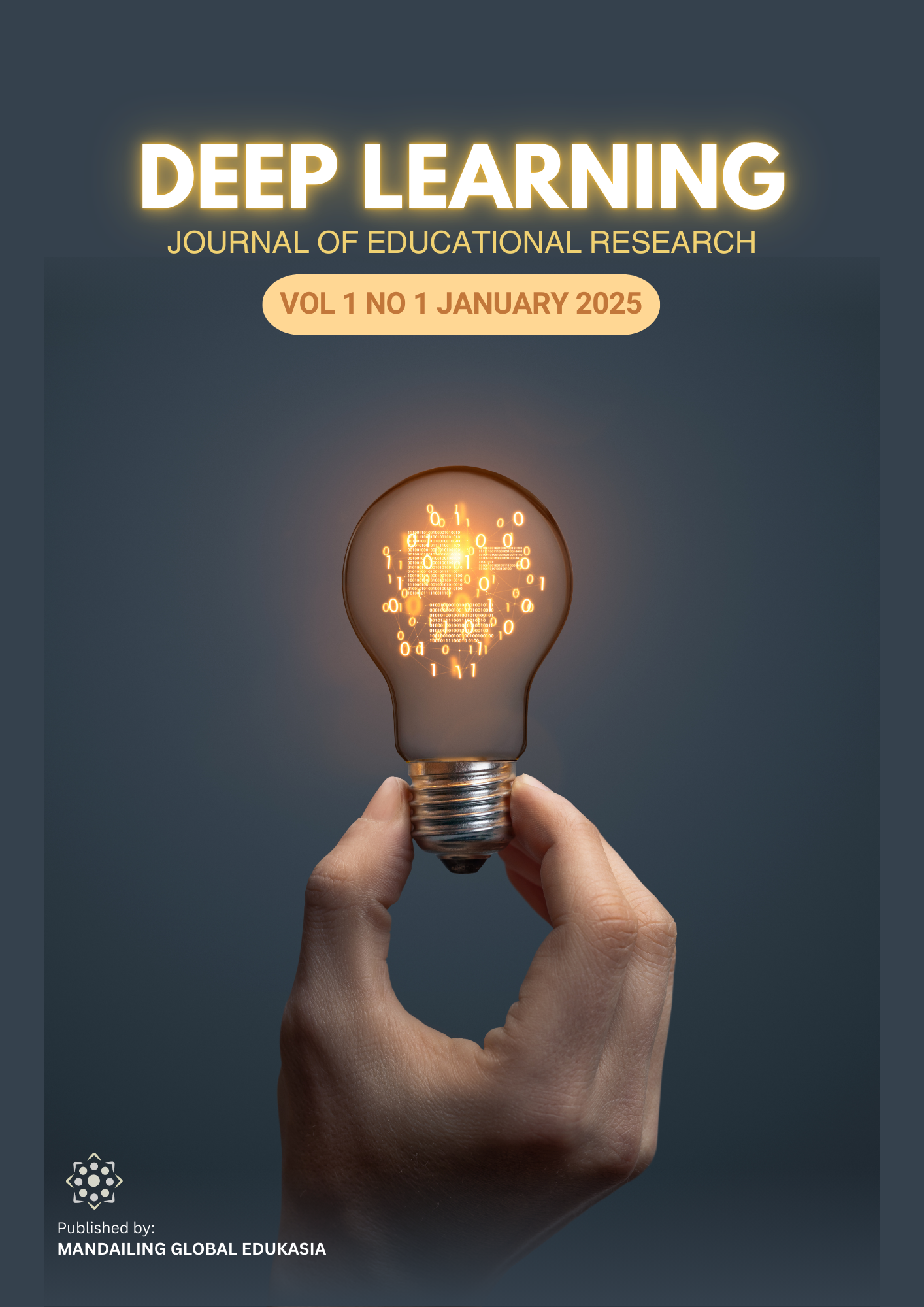Project Based Learning Model to Improve Students' Critical Thinking Skills in Natural Science Learning at MIS Asy Syafi'iyah Pecangakan
DOI:
https://doi.org/10.62945/deeplearning.v1i1.206Keywords:
Critical thinking, learning tools, project based learningAbstract
The 21st century life is a life without boundaries, globalization, and the exploration of technology is very easy. The digital economy era of the 21st century requires a knowledgeable, skilled, and innovative workforce. Therefore, students must be able to solve problems with superior thinking ability to be ready to plunge into global society. To overcome this challenge, students need to be equipped with 21st century skills that have four main components: digital literacy skills, creative thinking, effective communication skills, and high productivity. In these four components, critical thinking skills are included in the thinking component of creativity. The ability to think critically is very important for students to solve problems that arise with logical reasoning and appropriate solutions. To develop critical thinking skills, it is necessary for teachers to create appropriate learning strategies in schools that contains four pillars of education established by UNESCO: learning to know, learning to do, learning to live together and learning to be. Based on the four pillars, the project based learning model is appropriate to develop student’s critical thinking skills. This is because in the model, students as learning center are given a project-shaped problem and they are required to solve it.
Downloads
References
Arikunto, S. (2002). Prosedur Penelitian. Bandung: Rineka Cipta.
Apriyanti, I., & Rahayu, S. (2024). Efforts to Improve Student Learning Outcomes through the Problem Based Learning Model in Islamic Education Learning at SD Negeri 104325 Kampung Manggis. Journal of Indonesian Primary School, 1(2), 61–68.
Elistiana, V., Novita, N., & Ginting, F. W. (2024). A Development of E-Module Learning Media based on SETS (Science, Environment, Technology, and Society) on Sound Wave Material. Indonesian Journal of Education and Social Humanities, 1(2), 20–32.
Erawadi, E., Hamka, H., & Juliana, F. (2017). The Analysis of Student’s Stressed Syllables Mastery at Sixth Semester of TBI in IAIN Padangsidimpuan. English Education: English Journal for Teaching and Learning, 5(1), 44–57.
Hamka, H. (2023). The Role of Principals on Teacher Performance Improvement in a Suburban School. QALAMUNA: Jurnal Pendidikan, Sosial, Dan Agama, 15(1), 371–380.
Hamka, H., Suen, M.-W., Anganthi, N. R. N., Haq, A. H. B., & Prasetyo, B. (2023). The Effectiveness of Gratitude Intervention in Reducing Negative Emotions in Sexual Abuse Victims. Psikohumaniora: Jurnal Penelitian Psikologi, 8(2), 227–240.
Harahap, D. S. (2024). Implementation of ChatGPT to Improve Students’ Critical Thinking Abilities. Indonesian Journal of Education and Social Humanities, 1(2), 33–39.
Harahap, S. M., & Hamka, H. (2023). Investigating the Roles of Philosophy, Culture, Language and Islam in Angkola’s Local Wisdom of ‘Dalihan Na Tolu.’ HTS Teologiese Studies/Theological Studies, 79(1), 8164.
Indrawati, N., & Desky, A. Y. D. (2024). How to Improve Elementary School Student Learning Outcomes by Implementing the Articulation Type Cooperative Learning Model? Journal of Indonesian Primary School, 1(2), 32–37.
Jannah, A., Lubis, A. H., & Julia, N. M. (2024). Development of Number Card Media in Mathematics Learning for Elementary School Students. Journal of Indonesian Primary School, 1(3), 12–23.
Latifah, I., & Safrida, I. (2025). Improving Students’ Language Skills with Punakawan Wayang Media at RA Mansyaul Huda: A Classroom Action Research. Journal of Indonesian Primary School, 2(1), 13–24.
Lubis, A. H. (2024). Improving Elementary School Students’ Reading Skills Using Picture Word Cards: How is This Possible? Journal of Indonesian Primary School, 1(2), 9–18.
Lubis, A. H., & Lubis, S. S. W. (2024). Development of Newsletter Media in Thematic Learning for Elementary School Students. Indonesian Journal of Education and Social Humanities, 1(1), 28–36.
Mauliana, I., Ulfa, N., & Fitria, A. (2024). Improving Student Learning Outcomes with the Problem Based Learning Model: Classroom Action Research at the State Islamic Primary School. Indonesian Journal of Education and Social Humanities, 1(2), 1–8.
Misqa, L., Oviana, W., Hayati, Z., & Jannah, M. (2024). Improving Student Learning Outcomes in Mathematics Learning through a Contextual Teaching and Learning Approach in Elementary Schools. Journal of Indonesian Primary School, 1(2), 19–26.
Muliawati, I., & Aldin, A. (2024). The Effectiveness of the Problem Based Learning Model on Elementary School Students’ Mathematics Learning Outcomes. Journal of Indonesian Primary School, 1(2), 27–31.
Nurliza, M., Lubis, A. H., & Lubis, S. S. W. (2024). Word Square Model Used by Poster Media to Improve Primary School Student Learning Outcomes. Journal of Indonesian Primary School, 1(1), 19–28.
Rahayu, L., & Daud, R. M. (2024). SAS Method assisted by Picture Story Books to Improve Elementary School Students’ Beginning Reading Ability. Journal of Indonesian Primary School, 1(1), 37–46.
Rahmah, S., & Lubis, A. H. (2024). Problem Posing as a Learning Model to Improve Primary School Students’ Mathematics Learning Outcomes in Gayo Lues. Journal of Indonesian Primary School, 1(4), 93–104.
Simamora, R. (2024). A Survey Research: What is the Role of the Mendeley Application in the Student Environment? Indonesian Journal of Education and Social Humanities, 1(2), 40–45.
Simaremare, S., & Siregar, R. (2024). Effectivity of the Microsoft Excel Application on Student Understanding in Statistics Courses. Indonesian Journal of Education and Social Humanities, 1(2), 9–19.
Sugiyono. (2018). Metode Penelitian Kuantitatif Kualitatif dan R&D. Bandung: Alfabeta.
Downloads
Published
Issue
Section
License

This work is licensed under a Creative Commons Attribution-ShareAlike 4.0 International License.









